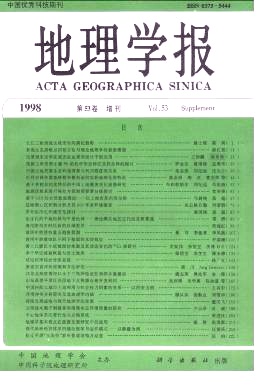Buheaosier, Liu Jiyuan, C. N.Ng
In this study, three test sites with the same longitude, have been selected form south to north in wetland area of East China. Five test sites with the same latitude have been selected in arid or semi-arid area of north China, (the former three test sites located in Eastern Asian Mon-soon Area and the latter five test sites located in transition area or Non-Monsoon Area). Pro-duction of 24-month time series of one month maximum NDVI composites have been accom-plished based on NOAA AVHRR and Landsat-TM Data. Average temperature, precipitation and wind-speed data in each average of the month to be synchronous have also been put into computer for analyzing the dynamically correlated model of driving forces of land-cover changes. Conclusion have been made that land-cover change in China has distinct seasonal fragileness in each test site and their relationship has been found.In the study, we draw the following conclusion:(1)Vegetation is the connection of soil, atmosphere and precipitation.When using vegeta-tion as an indicator of land cover change, not only seasonal but also spatial change have been found in the land cover change. In addition, some unstable phase have also been identified.We conclude that the unstable phase in land cover was related to the seasonal and longitudinal change.(2)The zone and coastal plain of east of China belong to East Asian monsoon. The climateis rather wet. The correlation between NDVI and temperature is obvious. But the correlation between NDVI and precipitation is not so good. Therefore, we conclude that in a region of high precipitation, temperature is the key affecting factor for growth of vegetation.(3) In northern China, the Daxinganling forest area, the typical grassland area and arid desert area almost lie on the same latitude. From east to west, the land cover types are forest, forest-grassland, typical grassland, desert-grassland and arid desert. In the line, as the distance from coastal line increase. the monthly average NDVI value depend more on precipitation. Thus, compared with temperature, precipitation is the key affecting factor for vegetation growth arid area.( 4) From south to north, under the limitation of temperature. the deviation of average NDVI is not obvious. However, the seasonal deviation is high. From east to west, under the limitation of precipitation, the regional deviation of NDVI coincide with the productivity of veg-etation. It implies that temperature affect the budding, flowering, fruiting of vegetation. On the other hand, precipitation affect the productivity of vegetation.(5)Wind is one of the driving force causing desertification in dry and semi-dry region. The period of lasting of strong wind seems to be coincident with the degradation of vegetation for each test sites. In contrast, when the cover of vegetation was at maximum, wind speed was found to be minimum, because of the inverse relationship between wind speed and NDVI, de-sertifiction and land degradation happen in the grassland and cultivation land in northern China. Some research show that desertification and land degradation happened on winter and spring which coincide with the unstable stage found in our study.(6)Our study shows further that desertification and land degradation in northern China is caused by natural factor, it also relates to the seasonal degradation of vegetation. The most suitable method to prevent land degradation is to build cultivates land or grassland.

 Where :Q is degree of ecological background ;A, is area of farm land ; S, is area of adminis-tration.Based on QINDEX and UINDEX , the relational coefficient formulas are following :then, the relational method, the sample strip analyses method and the trend-face anal-yses method were adopted, the trend-face analyses formula is following:
where; zis trend value; a0a1a2,......,an are coefficients.
Where :Q is degree of ecological background ;A, is area of farm land ; S, is area of adminis-tration.Based on QINDEX and UINDEX , the relational coefficient formulas are following :then, the relational method, the sample strip analyses method and the trend-face anal-yses method were adopted, the trend-face analyses formula is following:
where; zis trend value; a0a1a2,......,an are coefficients.